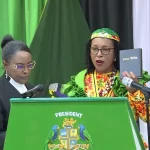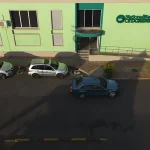Banana Exports from Dominica

Banana exports have played a defining role in Dominica’s agricultural, economic, and social development. For over four decades, the banana trade was the country’s main source of export earnings and a primary livelihood for thousands of rural families. Though significantly diminished today, the legacy of banana exports continues to shape land use, community identity, and food security initiatives across the island.
Rise and Dominance of Banana Production
Dominica’s commercial banana industry began gaining momentum in the late 1950s, shifting from small-scale subsistence farming to organized export-oriented cultivation. The industry saw rapid growth with the formation of the Dominica Banana Growers Association (DBGA) in 1953, followed by the establishment of the Dominica Banana Marketing Corporation (DBMC) in 1961. These entities worked closely with Geest Industries, which held exclusive shipping rights to the United Kingdom.
By the mid-1970s, bananas accounted for more than 60% of Dominica’s total export earnings, and the island had earned the nickname “the land of the green gold.” Over 7,000 banana farmers were actively cultivating the crop, with key producing areas in Marigot, Wesley, La Plaine, Castle Bruce, Calibishie, and Salisbury. The industry became an economic anchor, supporting transport services, port activity, agricultural supply stores, and rural household consumption.
Production peaked in the 1980s when annual exports regularly exceeded 30,000 tonnes, mostly shipped to the UK under preferential terms secured by the Lomé Convention, a trade agreement between the European Union and African, Caribbean, and Pacific (ACP) states. These arrangements allowed Dominican bananas to enter the European market duty-free, ensuring stable prices for local farmers.
Structural Challenges and Rapid Decline
Despite its dominance, the banana industry in Dominica was structurally vulnerable. It relied heavily on a single export destination, narrow pricing margins, and strict cosmetic standards imposed by European supermarkets. The model left little room for processing, value-added products, or market diversification.
The World Trade Organisation (WTO) ruled in the mid-1990s that the EU’s preferential treatment of ACP bananas was inconsistent with global trade rules. This decision led to a phase-out of the protective framework, exposing Dominican producers to direct competition from large-scale Latin American exporters who benefited from economies of scale and lower labour costs.
Banana exports began to decline sharply. By the early 2000s, Dominica exported less than 10,000 tonnes annually, and the number of active farmers had dropped significantly. This was compounded by the devastation of Hurricane David in 1979, Hurricane Dean in 2007, and Tropical Storm Erika in 2015, all of which severely damaged crop infrastructure.
Transition, Recovery, and the Future
Today, the export banana industry survives at a reduced scale. A few cooperatives and independent farmers continue to grow bananas for regional and niche markets, including organic and fair-trade buyers. Institutions like the Ministry of Agriculture, the Dominica Export Import Agency (DEXIA), and international development partners have shifted focus toward diversification, supporting crops like plantain, cocoa, coffee, and breadfruit, while improving farm-to-market logistics.
Bananas still hold strong historical importance in the minds of Dominicans. Many older farmers remember the early morning trek to collection points, the weight of green bunches on their backs, and the sight of Geest ships docked at Portsmouth. While bananas no longer dominate the export economy, they endure as a cultural icon and continue to shape national conversations on food sovereignty, rural development, and resilience.




